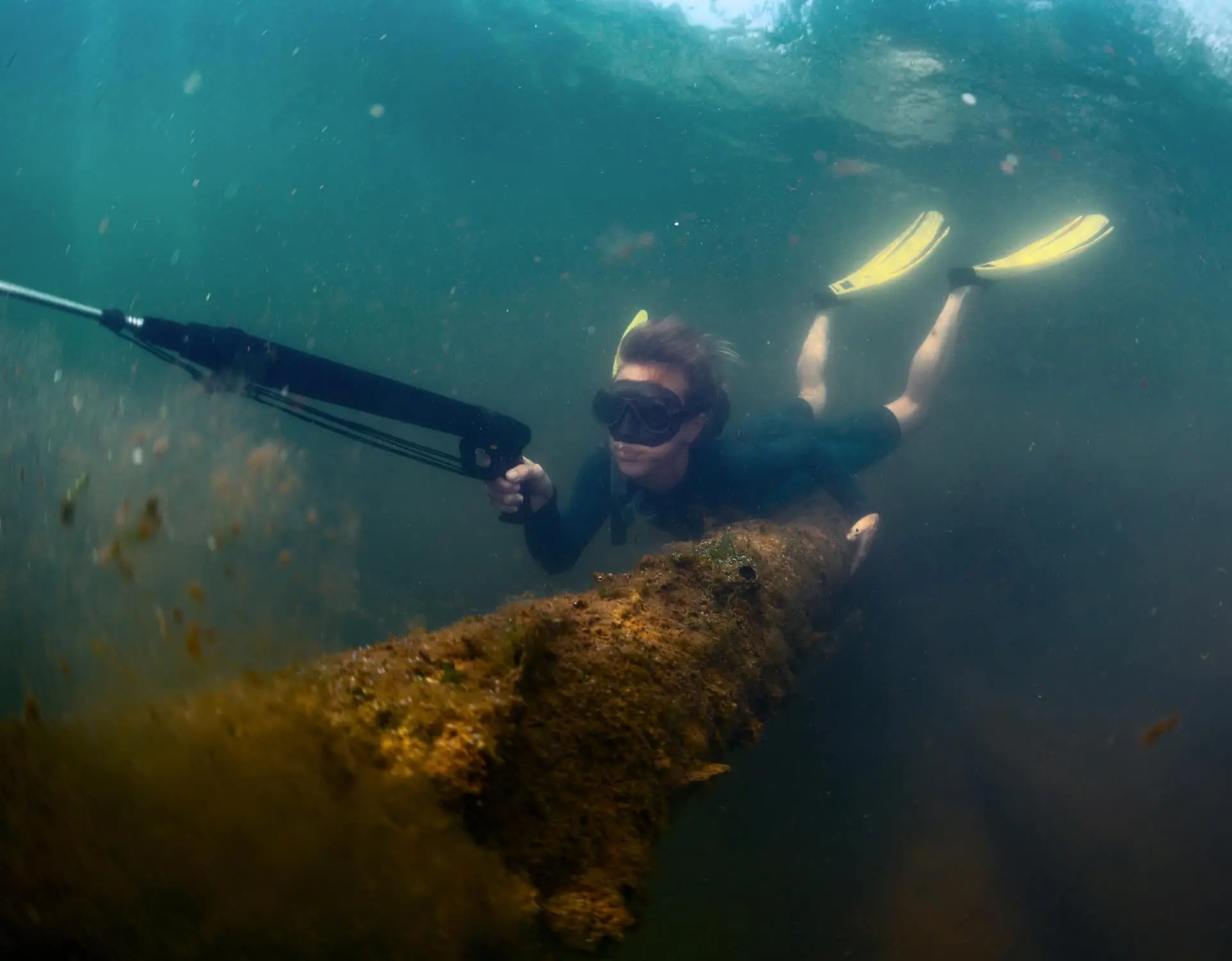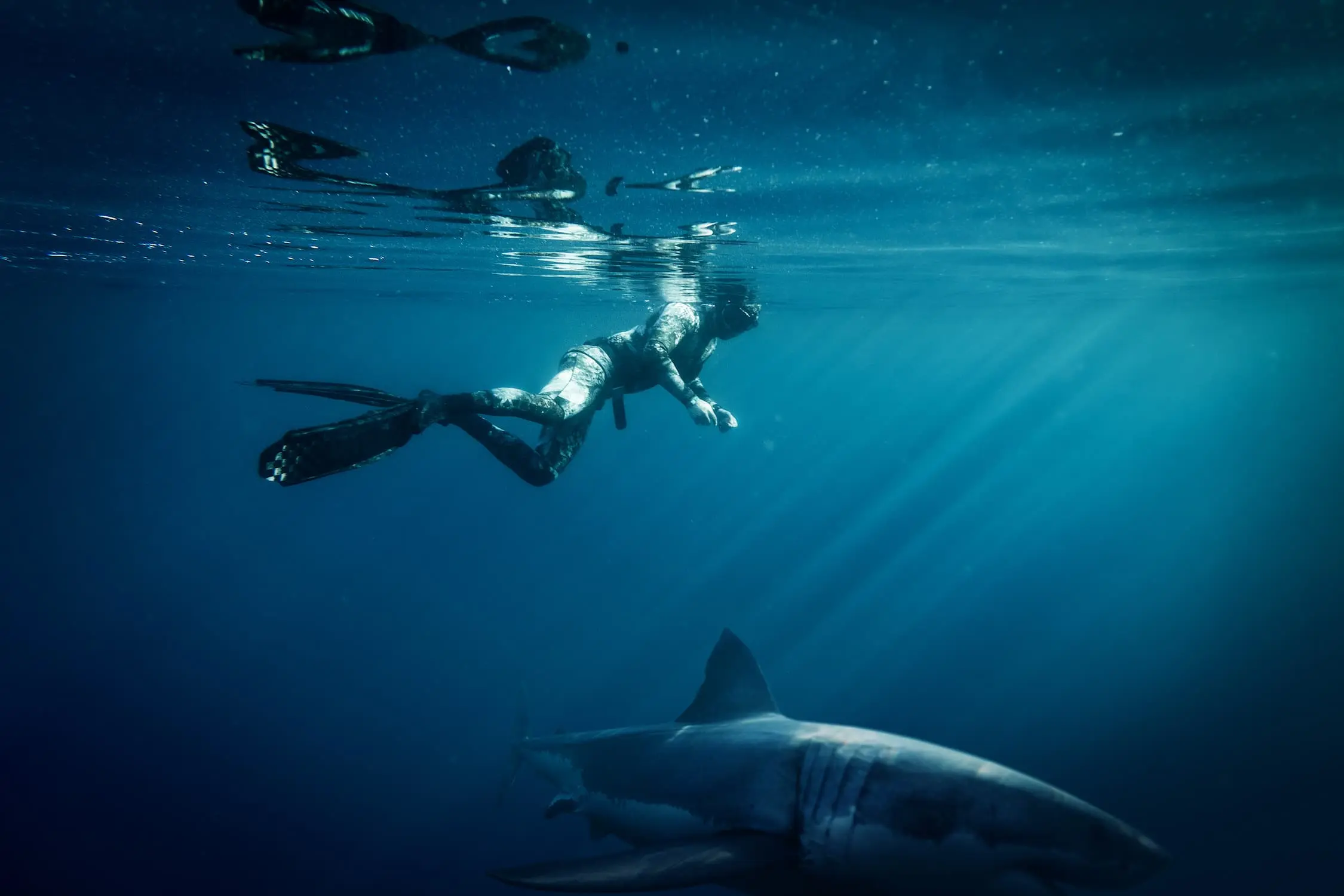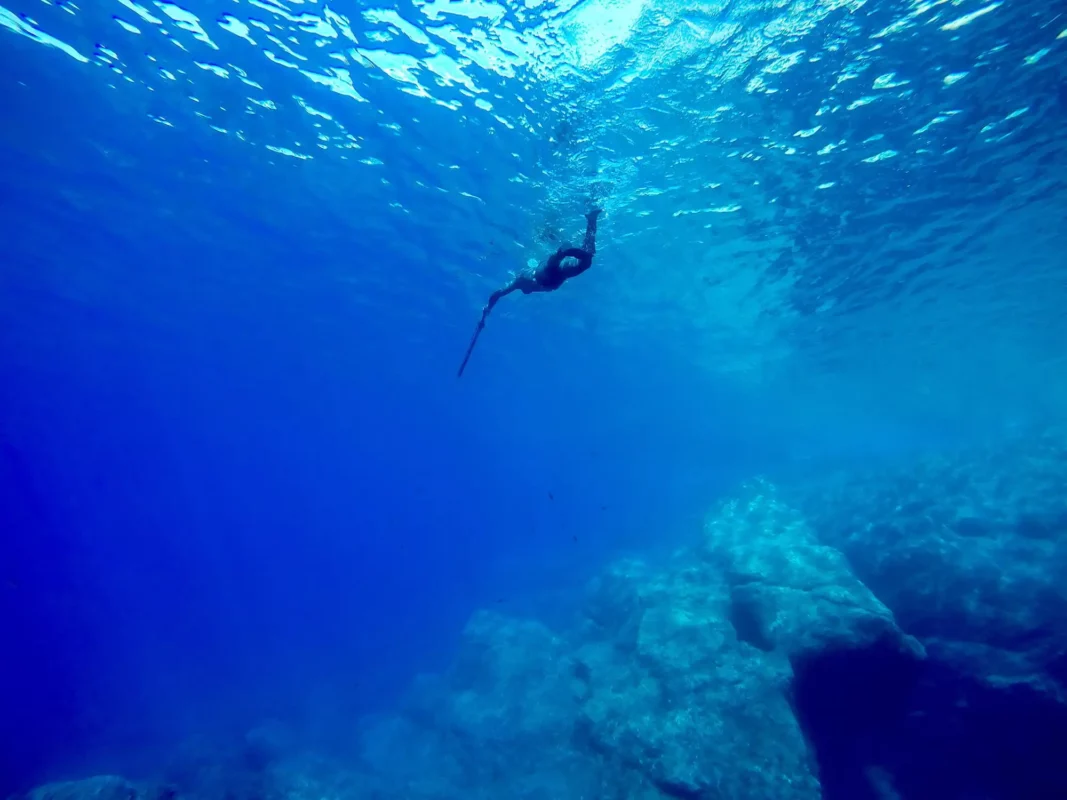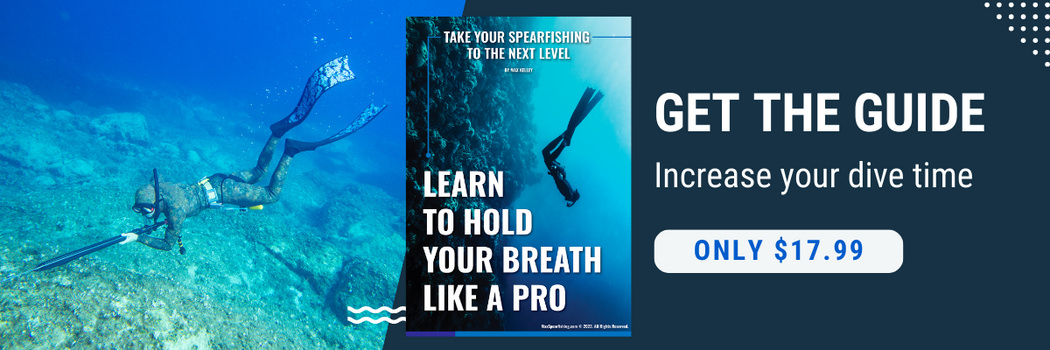No products in the cart.
Spearfishing Advice
Comprehensive guide to spearfishing techniques
I’ve been in an out of the water my entire life. But I’ve got a problem. When spearfishing with new people I’m often surprised at their lack of experience. Especially with different spearfishing techniques.
Sure, they’re great in one area. But if you want to bring home fish, day after day, you need confidence no matter what type of hunt you’re on.
There’s no such thing as the right way to go spearfishing. The weather, the fish you’re targeting, and even your abilities as a spearo will make a big difference to the spearfishing techniques to use.
Max Spearfishing is reader-supported. We may earn a small commission for purchases using our links. Click here to learn more.
Comprehensive guide to spearfishing techniques
But before we get stuck into it, I want to run through some general lessons that apply. Follow these and you’ll have much better results when you go spearfishing.
- Focus on the hunt. You need to be prepared before you even get into the water. You need the right tools to ensure your success, and strategy that’s going to work for the area you’re spearfishing. Oh, and a positive mindset never hurt either. You will catch a good fish today.
- Never give up. I can’t tell you the amount of times I’ve missed a prize-winning fish. It’s a lot. As soon as you let your attention drop, you stop being a hunter. Maybe you’re cold. Tired or hungry, and you’ve “given up” to head back to the boat. Only to get surprised by one of the biggest fish of the day. Of course you miss it. When you’re in the water with your speargun, never give up. You never know when the right fish is going to choose to appear.
- Get comfortable in the water. If you’re flapping around or in pure predator mode, the fish will be able to tell. Being aggressive will scare later fish away, so take a breath. Calm down, and move through the water like you belong there.
- Learn as much as you can. I should also add here to never stop learning. Every spearo will have different experiences and different advice. Pay attention and don’t be afraid to spark up a conversation with them. One thing I also do is heavy research on all my dive sites, and record my dives. This way I know the right tides and conditions for my regular spots to work. And I’m always scouring maps to uncover new “secret” locations to try.
- Don’t chase the fish. You’re a predator in the water but you’re out of your element. All you’ll do is scare your target away, and broadcast to every other fish in the area that you’re on the hunt. You may even scare away any prized-gamefish that are watching your every move. The only time I’d recommend chasing a fish is if they’ve torn off your shaft and you’re pursuing them for the kill.
- Be careful with your gun. A speargun is a deadly weapon, and can do a whole host of damage should it fire into another person. When you’re not actively hunting the safety needs to be on, and never, ever point it at another person. Treat your speargun the same as a firearm. If you’re ever out spearfishing with another diver who doesn’t follow this rule, do not hunt with them. It’s not worth your life.
Right, now let’s get straight into the spearfishing techniques.
Spearfishing from the surface
This spearfishing technique is where we all start. Floating on the top of the water armed with a pole spear or a speargun. It’s the easiest way for you to get comfortable shooting. All you need to do is float on the top, and as a fish passes by take your shot.
Once you’re proficient with your speargun this method isn’t the most advanced. What I’ve found is it’s too difficult to spot your prey from above. Most fish have coloring to camoflague them from predators employing this specific tactic.
It’s also quite difficult to land your shots from the surface. You’re much further from the fish your’re targeting which gives them a higher chance of escape. I’d only recommend this spearfishing technique for beginners who are still learning, or hunting in a tidal zone.
Spearfishing from ambush
It’s pretty obvious what hunting from an ambush entails. As you’re spearfishing on the surface keep an eye out for a good location for an ambush. I like to position myself flat on a rock, or on the edge of a bed of seaweed facing out into the sand. This way the natural formations and vegetation in the water break up my outline, and the fish don’t know I’m there.

Be as stealthy as you can while you dive. Take a deep breath, then dive to the bottom. Then stay frozen in place with your speargun extended. Your goal is to blend in with your surroundings when using ambush spearfishing techniques. I usually grab hold of a large rock or the base of some seaweed to help keep myself in position.
If you’ve found a good spot, the fish will start swimming by, and get very close to you. Much closer than you’d get on a surface hunt. The only challenge is if they’re swimming at a higher level than you laying on the bottom. Their silver bellies will make them harder to spot against the colors on the surface.
Of course, there’s a danger to this type of dive, as you’re laying still and will run out of air. Pay attention to your body, and if you feel like you need to take a breath, do it. There’s no point waiting for the perfect fish then blacking out. You need to breath. After a while you’ll fall into a rhythm, taking a breath on the surface before diving down to resume the ambush.
Active spearfishing
When active spearfishing you follow a path along the seabed. I like to choose a path that has a couple of ambush locations, so you can surprise your target fish.
You don’t need to make this a marathon. I usually find a spot with a couple of good ambush locations that aren’t too far apart, and start my dive.
Again, dive quietly, then lie flat on the seabed. From here, you want to pull yourself along the ground using your free hand. Try not to let your speargun, weight belt or anything else bang into the rocks. Absolute silence is a must with this spearfishing technique if you want to catch a fish by surprise. I’d also recommend not kicking. Your spearfishing fins will also create a disturbance that put any nearby fish on high alert.
After spotting a target fish, you’re going to strike in a very similar fashion to hunting from ambush. Keep your body still, then start extending your gun arm and your speargun so as not to alarm the fish. Fire once your ready. Underwater your movements should be graceful. Anything sharp or sudden will give away your intentions, and scare off the fish.
Spearing hidden fish
Fish aren’t always out in the open. Especially if you’re hunting in the reefs or if they’re a slower species. Instead, you’ll find them hiding in a hole, cave or a crevice until they need to go out in search of food themselves. What you’re looking for here is the places where fish may be hiding, so you can find them and hunt them.
Of course, there’s a few things to note with this spearfishing technique:
- You’ll need a short gun, with a heavy spear (at least 7mm) and a screw on tip. Because you will hit rocks. The only way to counter this is to use a less powerful setup, and a tougher gun. I have a single 14mm band on my cave gun, and it’s only 65cm long.
- The trouble comes in actually spotting the caves. They will be deep, and it’s going to be dark and hard to see the fish hiding underneath. One way to combat this is to use a flashlight, which will make this type of hunting far easier.
- Be careful what you’re sticking into the hole. You can snag your gear or arm and get stuck, and you also don’t always know what’s hiding in there in the depths of the cave. Don’t stick your hand in there unless you want to risk something biting it.
Finally, it bears mention that caves are dangerous. Before trying these advanced spearfishing techniques, you should be confident in your abilities. And comfortable with your gear. Getting snagged or stuck underwater is a potential death sentence. Don’t swim into any funnels or areas which could trap you, and be wary of the surges underwater. It’s not worth risking your life for a fish.
Now when you’re ready to start spearing hidden fish, there’s two ways to do it.
Canyon dives are exactly what they sound like. Like the ambush technique, position yourself near to the entrance of a canyon or a gulley. At a spot where you think fish may be passing through. Then wait. Keep focused on a specific section, and take your shot when your target fish swims through.
Hole dives are similar, but the fish will usually lead you to these. Then it’s just a matter of approaching from a different angle, so you can ambush them from the side. I make it a habit when I’m spearfishing to always check potential caves. Ledges, or any little cranny where fish may be hiding. Often, they’ve not go anywhere to escape, and you can take a perfect shot. Just don’t give up too soon. The key to making spearfishing techniques like this work – is patience. You may need to return to the same hole again and again to scan every inch of the interior for the fish you’re hunting. They’re there.
Spearfishing with the tides
As a grommet I was spearfishing long before I could afford a boat. So spearfishing in the tidal areas was one of the most productive areas I was able to reach. It’s often ignored by many spearos, but there’s plenty of mid-sized fish in here.
You’ll find schools of fish feeding in the foam, zipping in and out of the waves in very shallow water. And with fish in a frenzy there’s a good chance you’ll find big pelagics waiting for their chance to strike.
Now a word of warning. This is the most dangerous area for you to hunt. The waves help the fish surge through the water much faster than normal. You’re going to get bounced all over the place with the waves and swell, and the bubbles are going to ruin your vision.
Not to mention the chances of getting washed up and onto the rocks if you get too close.
I like to think I’ve mastered this tidal zone over the years, and have a couple of tips if you’re going to hunt here.
First, make sure you’ve got heavy-duty spearfishing gloves. I can guarantee you there will be a lone wave that catches you off-guard and you’ve got to hang on for dear life. Tearing your hands up while you do this is not idea.
I’d also recommend wearing an old, thick wetsuit. Because you will get bounced off the rocks, you don’t want to tear up your brand new one. I’ve got an old 7mm I always wear when I’m planning to go in the tidal zones. I’ve repaired it that many times over the years one more rip is hardly noticeable.
It’s also important to have nothing that can get you snagged. Your line will get washed over rocks. You will get caught up.
After getting tangled twice, I now always remove my float line. Clipping it to a rock so it’s positioned outside where the waves are breaking. You won’t need it. Most of the fish you’ll encounter here won’t put up a fight like a big pelagic.
For me, one of the spearfishing techniques that works best in this area is staying shallow, in the first couple of meters of water. This puts me underwater enough to ride out the surges in the waves. And on an equal playing field to the schooling fish. Too deep and you can struggle to see them in amongst the bubbles and the foam. Then wait for the fish to close in, and take your shot.
Spearfishing in dirty water
I’d love perfect conditions every time I wanted to jump in the water, but mother nature often has other ideas. Sometimes, you’re facing bad conditions and dirty water. But that doesn’t have to ruin your spearfishing plans.
Now the number one rule is that safety comes first. Don’t ever get out into the water if it’s too rough, or the conditions are dangerous. But here’s how I still catch a fish or two when visibility is poor.
The first is the power charge. Dive to the bottom and swim along at a swift pace. Like what you’d use to follow and chase an injured fish for a second shot. As the fish you pass become aware of your presence, they’ll spook and swim off. When you hear or see this happen, stop and lie prone on the seafloor. Fish are curious. When they think the danger has passed they’ll swing back for a look at you, and give you a chance to get a shot off.
If they don’t double back, you can use another technique to draw their curiosity. Make a grunt sound. Imagine the hacking sound that Gollum makes in Lord of the Rings. Use the back of your throat to make a similar noise. Often this is enough to get the fish to come back for a look at me, and give me a decent shot.
Chumming the water for spearfishing
One spearfishing technique that’s a little riskier but can attract some really big fish is chumming. I catch a couple of bait fish, and cut them up so their flesh and blood creates a feeding zone near your dive site.
Any big fish nearby will come in to investigate. Their sense of smell in the water is far greater than what you can see, and you can get a shot off when the close. The risk is this doesn’t only attract fish, and if you’ve got any sharks in the nearby area this will bring them in too.

Use chumming at your own risk.
Of course, if you’re not comfortable chumming the water for spearfishing you can also fake it. I’ve found there are almost always large fish out there, watching you on every dive. The trouble is, they got big by being wary. So they hang back, out of sight.
If I’m having a particularly bad dive, one trick I use is to drop down to the sand and start digging. The silt and sand gets stirred up, and fish will come in and investigate. This can give you a chance to take a shot.
Baiting and flashers for spearfishing
I only learnt this spearfishing technique a few years back, and it’s proven to be a winner time and time again. It’s especially good in deep water where you need to bring the big pelagics in. Prepare a separate float and rig it with a series of flashers. I then tie this off to the bottom, or let it float alongside me.
Hanging from the float is 3-meters of line with a handful of different flashers. I built mine from surplus gear I had in my garage.
The float’s a recycled white milk bottle, so I can always spot it at the end of my dive and pick it up before I leave.
Tied on the line is:
- a bunch of old lures with the hooks removed
- a big plastic squid I got as a freebie from a boat show
- a bunch of metallic ribbons I cut from an old Mylar blanket
- a couple of pieces of stainless steel to weigh it down
This does the trick, and I’ve also got a couple of flashers tied to my towline. They only hang about a foot below, but it gives any fish nearby something interesting to come take a look at. So you can make the shot. I was doubtful at first, but this is one of the most productive spearfishing techniques I use time and time again.
Putting your spearfishing techniques together
I’ve spent the better part of my life in the water. And these days I don’t use just one of these spearfishing techniques alone. You’ll improve with practice of course, but there’s a secret to success.
You’ve got to combine the different spearfishing techniques.
Here’s some examples to give you an idea of what I mean.
When you’re actively spearfishing keep an eye out for any hidden holes or cavities. I have a rule that nothing goes unchecked when I’m spearing. Following this has often led me to find new ambush sites along with my fair share of crayfish.
I also like to slow down when I’m spearfishing. This is a fundamental lesson that’s important to all spearfishing techniques. No matter what, I give myself 15 – 20 seconds of pause at any potential ambush locations. It’s lots slower than how I normally swim through the water. But I’ve found that a small amount of pause is enough for any curious fish to close in.
When you’re starting out I get how spearfishing can feel a little overwhelming. You’ve got so much gear, and there’s so many things going on all around you. Let alone the rush of actually finding a target fish and taking your shot.
My only advice is to go slow. It’ll take time for your abilities to improve, to learn these spearfishing techniques and hone your fitness and agility in the water. Be patient with yourself. And focus on learning and mastering each of these spearfishing techniques. Even if it takes a season. There’s no rush, and in my experience the slower you take it the more success you’ll have.
Happy spearin’


